Wrangel Island, an isolated landmass in the Arctic Ocean, is home to a wide variety of wildlife, including numerous species of birds.
Located north of Russia and just 140 kilometres from Alaska, this remote wilderness area provides important nesting and feeding grounds for many bird populations.
With its rugged terrain, harsh climate, and limited human disturbance, Wrangel Island is an ideal habitat for a diverse range of avian species.
From the massive eagle and soaring white-tailed sea eagle to the small and delicate snow bunting, the island is a haven for bird enthusiasts and a crucial sanctuary for many threatened and endangered species.
This article will explore the many fascinating bird species that inhabit this unique corner of the world.
10 Common Birds Found In Wrangel Island
Wrangel Island is a remote and pristine island located in the Arctic Ocean, known for its unique wildlife. Here are 10 common birds that can be found on Wrangel Island:
1. Pelagic Cormorant
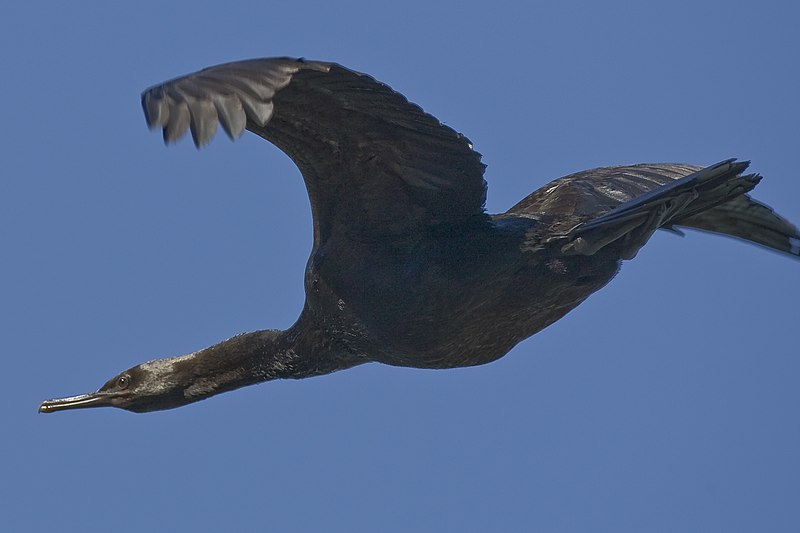
The pelagic cormorant, also known as Baird’s cormorant or violet-green cormorant, is a small member of the Phalacrocoracidae family and is often referred to as the Pelagic Shag.
It inhabits coastal areas and open oceans throughout Northern Pacific regions. These birds are relatively small in size, with dark greyish bodies and bright blue eyes that can be seen from far distances.
Their wingspan extends up to two feet wide, allowing them to glide through air currents at rapid speeds while they hunt fish for food.
Their impressive diving ability allows them to plunge underwater to reach 30 meters deep.
The pelagic cormorants are quite social creatures who live together in large flocks during both summer and winter months, providing safety in numbers when hunting prey beneath the waves of their ocean home.
Scientific classification:
| Kingdom | Animalia |
| Phylum | Chordata |
| Class | Aves |
| Order | Suliformes |
| Family | Phalacrocoracidae |
| Genus | Urile |
| Species | U. pelagicus |
Also Featured In: Native South Korean Birds, Birds that Live in Vancouver
2. Common Eider
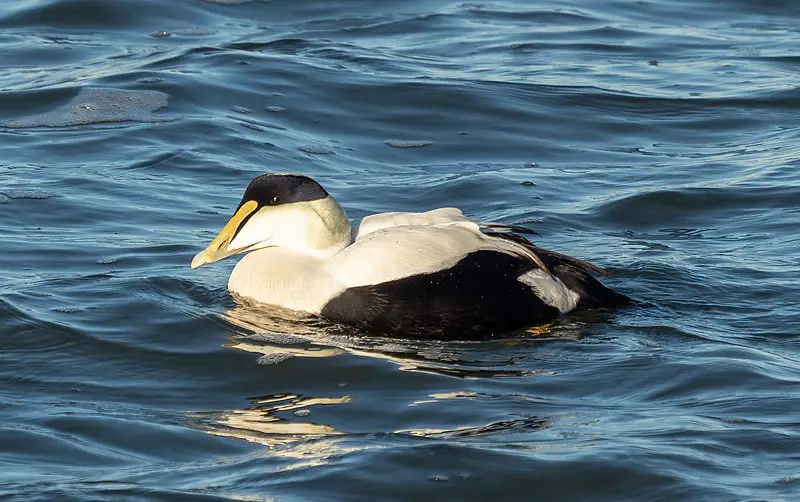
The Common Eider is a large sea duck that inhabits the coasts of Europe, North America and eastern Siberia.
It breeds in arctic regions and some northern temperate climates but travels further south during winter to form flocks with other ducks in temperate zones.
These birds are easily recognised by the characteristic black and white markings on their wings, which can be seen when they take flight.
They have light brown bodies topped off with bright yellowish-coloured heads, making them quite striking creatures.
The eiders feed mainly on molluscs such as clams, mussels, snails and worms found at the bottom of shallow coastal waters or tidal flats.
Their diet helps improve water quality through natural filtering processes carried out by foraging for food underwater, which benefits local marine ecosystems immensely.
Scientific classification:
| Kingdom | Animalia |
| Phylum | Chordata |
| Class | Aves |
| Order | Anseriformes |
| Family | Anatidae |
| Genus | Somateria |
| Species | S. mollissima |
Also Featured In: Common Birds in Canada, Most Common Scotland Birds
3. Glaucous Gull
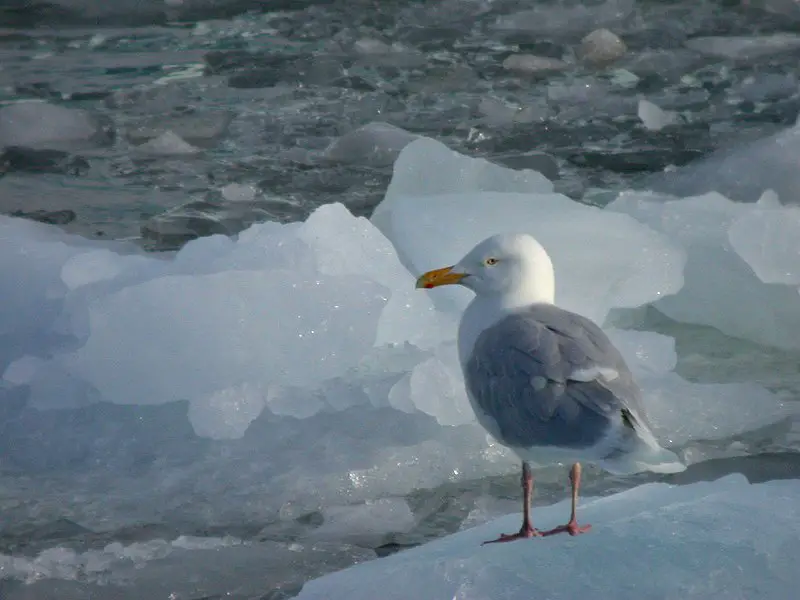
The Glaucous Gull is a majestic bird species found in the Arctic regions of the Northern Hemisphere.
It has an impressive wingspan, one of the largest gulls and second only to The Great Black-Backed Gull.
During winter, they migrate southwards towards coasts along Holarctic shores, where their presence is as far down as South Africa.
Their genus name ‘Larus’, from Latin origins, likely refers to some seabird, while its specific name ‘hyperboreus’ derives from Greek for “northern”, referencing Ancient Greeks who lived near what became known as the North Pole.
This stunning avian species makes them an unforgettable sight on any journey northward or through coastal areas throughout much of Europe and Asia.
Scientific classification:
| Kingdom | Animalia |
| Phylum | Chordata |
| Class | Aves |
| Order | Charadriiformes |
| Family | Laridae |
| Genus | Larus |
| Species | L. hyperboreus |
Also Featured In: Norway Birds, Large Birds of Michigan
4. Brant
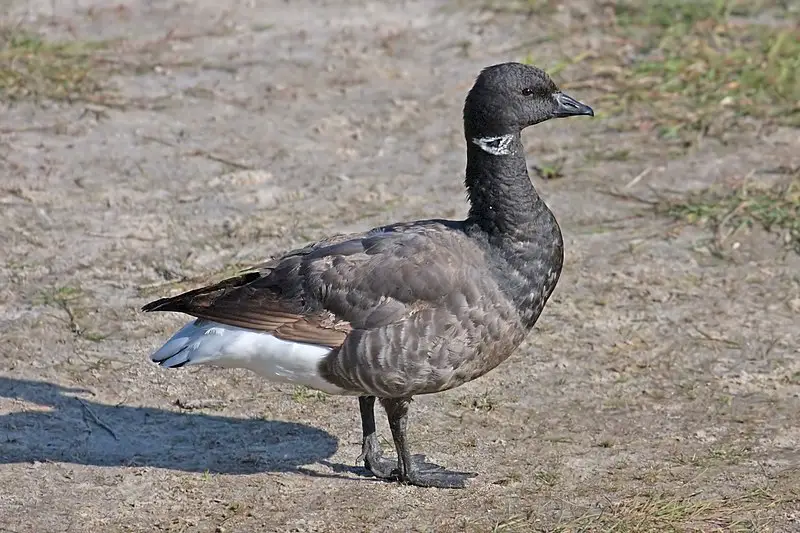
The Brent Goose, or the Brant or Bernicla goose, is a small species of waterfowl belonging to the genus Branta. It has three subspecies that live along temperate coastlines and breed on high-Arctic tundras.
This species can be identified by its short stubby bill, which measures between 22 and 26 inches long and 42 and 48 across its wingspan when fully grown.
They typically weigh between 0.88 – 2 lbs depending on location and seasonally changing diets they may consume while in flight or at rest stops during migration routes they take annually from one region to another.
The Brent Oilfield was named after this bird due to its abundance in certain areas near bodies of water where it would gather for safety during migrations over land formations such as mountain ranges or other geographical features that could otherwise become difficult obstacles if not avoided altogether.
Scientific classification:
| Kingdom | Animalia |
| Phylum | Chordata |
| Class | Aves |
| Order | Anseriformes |
| Family | Anatidae |
| Genus | Branta |
| Species | B. bernicla |
Also Featured In: Ireland Birds, Estuaries Birds
5. Snow Bunting
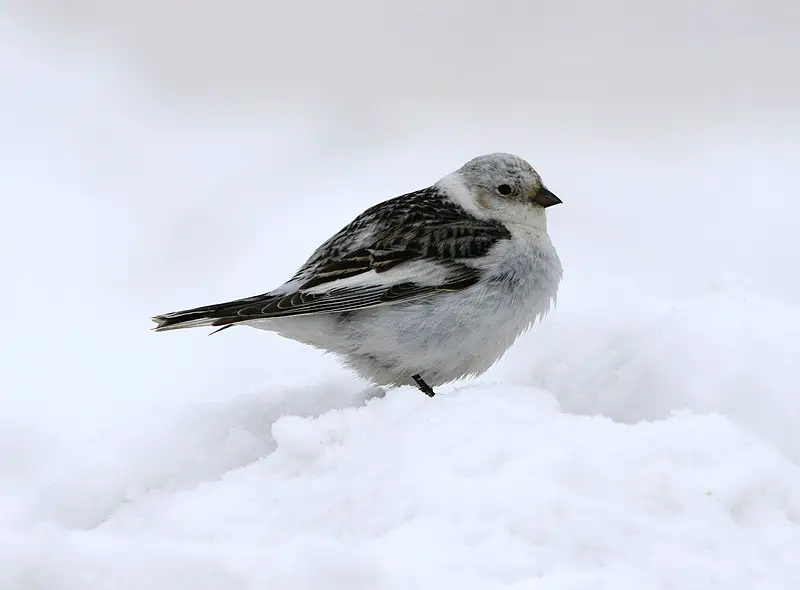
The snow bunting is a small and colourful passerine bird found in the Arctic regions of the northern hemisphere.
With its bright white feathers and black markings on its wings and tail, it stands out amongst other birds that inhabit these cold climates.
This species has adapted well to survive in this harsh environment; they nest under boulders or rocks, so their eggs are shielded from predators and blizzards.
They feed mainly on insects during summer but switch to seeds when winter arrives as they seek food sources that will not freeze over with ice.
The Snow bunting is an important part of the local ecosystem because it sustains larger animals, such as foxes and owls, who rely upon them for survival throughout the wintertime.
Scientific classification:
| Kingdom | Animalia |
| Phylum | Chordata |
| Class | Aves |
| Order | Passeriformes |
| Family | Calcariidae |
| Genus | Plectrophenax |
| Species | P. nivalis |
Also Featured In: Iceland birds, Most Common Winter Birds
6. Snow Goose
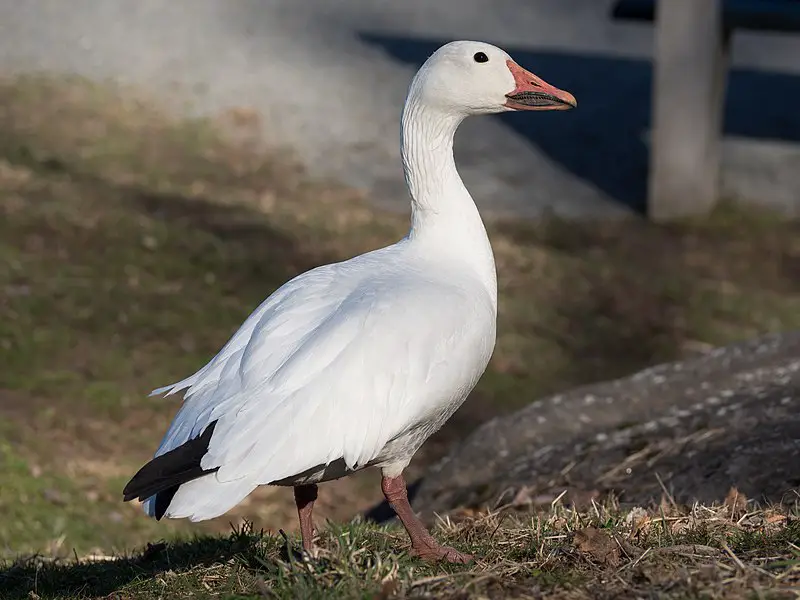
The snow goose is a species of goose native to North America, recognizable by its white or dark plumage. It belongs to the genus Anser, also known as the “grey goose”.
Snow geese breed north of the timberline in Greenland, Canada and Alaska – places with harsh climates that would seem inhospitable for such birds.
Yet they thrive here due to their migration pattern; when winter arrives, they fly southwards along two major routes towards warmer climates like California and Mexico, where food sources are more plentiful.
Although these graceful waterfowls have adapted well to human activity near some parts of their range, hunting still takes its toll on them, so we must protect this species from extinction.
Scientific classification:
| Kingdom | Animalia |
| Phylum | Chordata |
| Class | Aves |
| Order | Anseriformes |
| Family | Anatidae |
| Genus | Anser |
| Species | A. caerulescens |
Also Featured In: Utah Birds, Water Birds Live around Us
7. King Eider
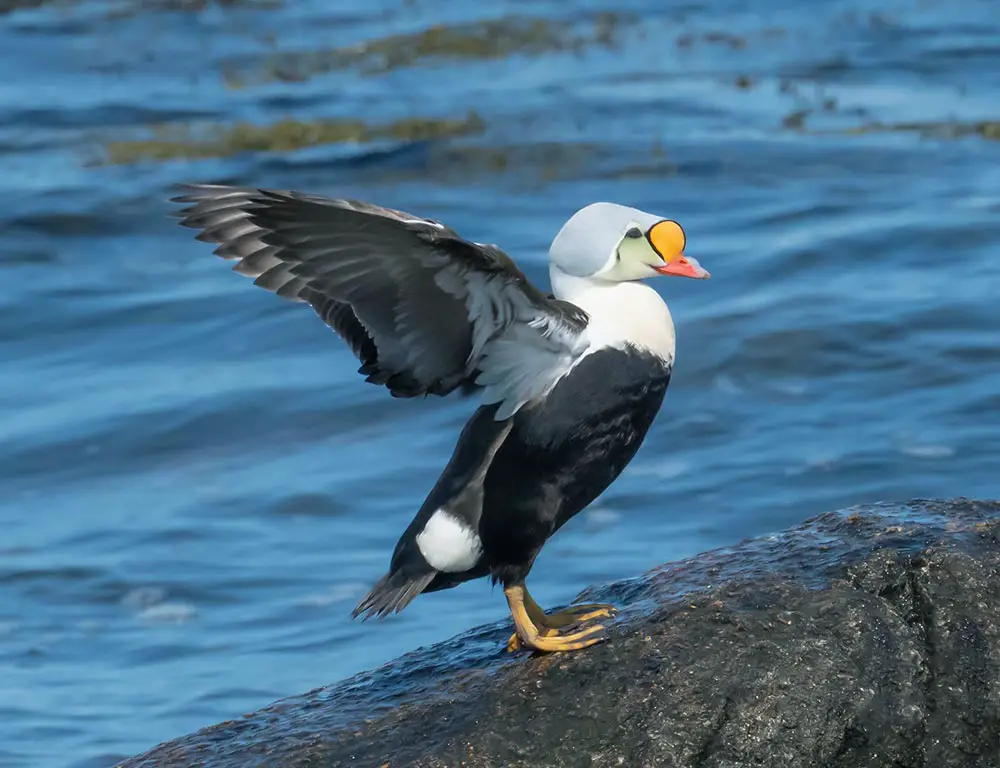
The King Eider is a large sea duck found in the Northern Hemisphere Arctic coasts of Northeast Europe, North America and Asia.
It spends most of its year near coastal marine ecosystems at high latitudes before migrating to the tundra for the breeding season from June to July.
During this time, they lay four to seven eggs in grass-lined nests on the ground with downy feathers as additional insulation.
These beautiful birds are renowned for their attractive plumage, which consists of shades of white and black, often with bright orange or green patches around the head region.
They have wide wings that help them fly through long migrations each year while also providing protection against predators like foxes during nesting season.
The King Eider is an impressive species that has adapted well to life within its cold habitat over centuries.
Scientific classification:
| Kingdom | Animalia |
| Phylum | Chordata |
| Class | Aves |
| Order | Anseriformes |
| Family | Anatidae |
| Genus | Somateria |
| Species | S. spectabilis |
Also Featured In: Maine Birds, Birds that Live in Greenland
8. Guillemot
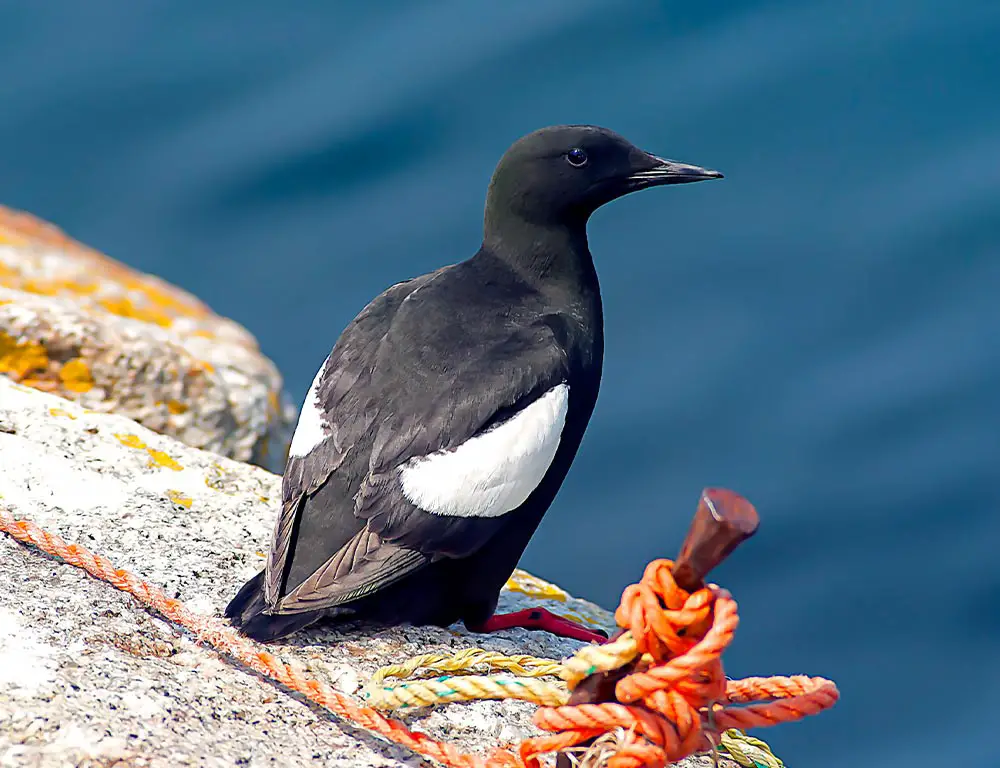
Guillemots, murres or turr are seabirds of the genus Uria. They have brown or black plumage during breeding season and are medium-sized.
These birds breed on the coasts of the northern Atlantic and Pacific oceans. The name “guillemot” is commonly used in Britain.
The French zoologist Mathurin Jacques Brisson introduced the genus Uria in 1760.
Guillemots are known for their ability to dive deep in search of fish, their primary food source.
They are also known for their unique calls used to communicate with their mates and offspring.
Guillemots are fascinating birds that are an important part of marine ecosystems.
Scientific classification:
| Kingdom | Animalia |
| Phylum | Chordata |
| Class | Aves |
| Order | Charadriiformes |
| Family | Alcidae |
| Genus | Uria Brisson, 1760 |
Also Featured In: Birds You’ll Find in the Sea,
9. Long-Tailed Jaeger
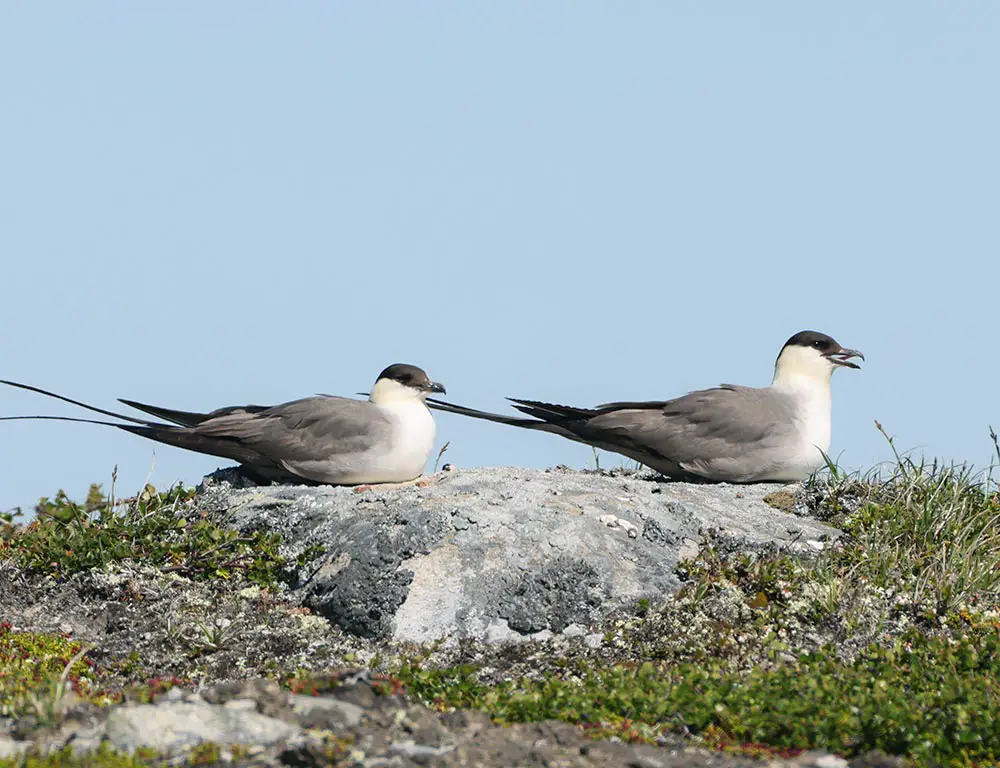
The long-tailed jaeger is a predatory seabird known for its slender, pointed wings and long, forked tail. It belongs to the Skua family and is often called a “hunter” due to its hunting prowess.
The bird’s name derives from the Faroese name for the great skua, which is also called the “skúgvur”.
The long-tailed jaeger is usually found in Arctic regions and is known to migrate long distances. This bird is particularly skilled at robbing other birds of their catches and is often seen chasing gulls and terns.
The long-tailed jaeger has a brownish-grey plumage with a black cap and collar. It is a beautiful and impressive bird known for its incredible flying skills and tenacity in hunting.
Scientific classification:
| Kingdom | Animalia |
| Phylum | Chordata |
| Class | Aves |
| Order | Charadriiformes |
| Family | Stercorariidae |
| Genus | Stercorarius |
| Species | S. longicaudus |
Also Featured In: Birds of Norfolk, Birds that Live in Svalbard
10. Large White-Headed Gulls
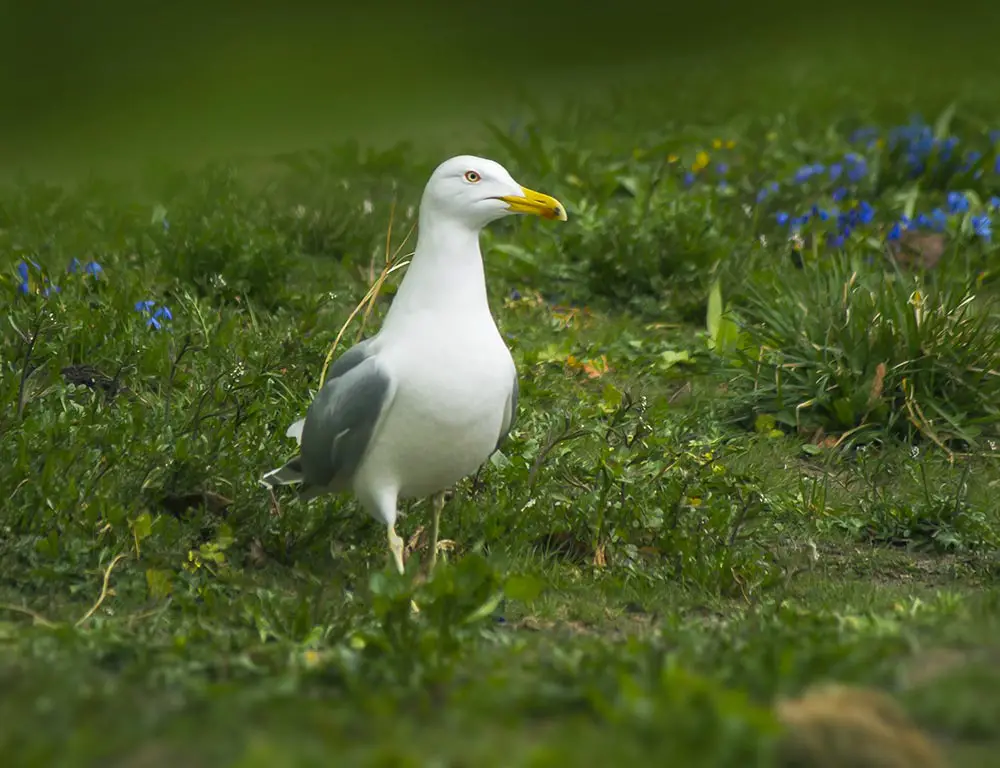
Large white-headed gulls are a type of bird that belongs to the genus Larus. They are found worldwide, but most of their species diversity is in the Northern Hemisphere.
These birds are well-known and abundant in their ranges. In the past, most gulls were placed in this genus, but now it is known that this arrangement is inaccurate.
This has led to the resurrection of other genera like Ichthyaetus, Chroicocephalus, and Leucophaeu.
The large white-headed gull is a majestic bird that can be easily recognized by its white head and large size. They are powerful fliers and often forage in coastal areas, nesting on cliffs or rock ledges.
Despite their abundance, large white-headed gulls face threats like habitat loss and pollution, which affect their populations in many areas.
Scientific classification:
| Kingdom | Animalia |
| Phylum | Chordata |
| Class | Aves |
| Order | Charadriiformes |
| Family | Laridae |
| Subfamily | Larinae |
| Genus | Larus Linnaeus, 1758 |
Conclusion
Wrangel Island, situated in the remote Arctic Ocean, is a haven for both bird enthusiasts and conservationists. This pristine wilderness supports a diverse community of avian species despite its harsh and remote environment.
From the resilient Snow Buntings to the striking Ivory Gulls, these birds have adapted to the extreme conditions of the Arctic, using Wrangel Island as a crucial breeding ground and sanctuary during the summer months.
The island’s unique ecological significance makes it an invaluable destination for birdwatchers and researchers, allowing them to witness these Arctic avian species’ remarkable beauty and resilience in their natural habitat.
Wrangel Island stands as a testament to the importance of preserving such remote and vital ecosystems.